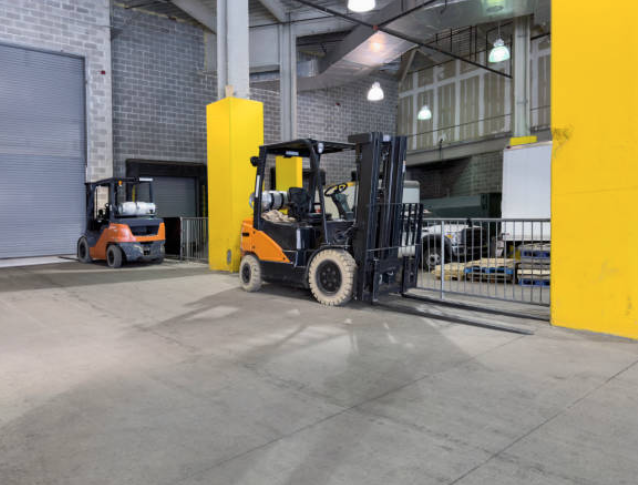
Posted on Tuesday, October 1, 2024
Forklifts play a crucial role in ensuring the smooth operation of roll forming facilities by efficiently handling heavy materials and finished products. Here are some key ways in which forklifts contribute to the production process:
In a roll forming facility, one of the most essential tasks is managing heavy metal coils that are used to feed the roll forming machines. These coils can weigh several tons, depending on the material and gauge, making manual handling impossible. Forklifts are essential for moving these coils from storage areas to the uncoiler or decoiler. With their powerful lifting capabilities, forklifts ensure that the metal coils are positioned precisely and safely, preventing damage to the equipment and minimizing downtime.
Once metal profiles are formed, they need to be transported to various areas for further processing, packaging, or storage. Forklifts are responsible for efficiently moving these finished products across the facility. Whether it's large metal sheets, tubes, or custom profiles, forklifts streamline this process by quickly transferring the materials, reducing bottlenecks in the production line.
Forklifts also play a significant role in maintaining organized staging areas and warehouses. After the roll forming process, finished products need to be stored or staged for shipment. Forklifts move and stack these materials into racks, keeping the production floor clear and optimizing storage space. This not only improves workflow but also ensures that products are easily accessible when it's time for shipping.
In addition to handling materials within the facility, forklifts are essential for loading and unloading trucks. Whether it's raw materials coming in or finished products going out, forklifts make it easy to transfer heavy metal coils and large shipments quickly and safely. This minimizes turnaround times, allowing the roll forming facility to operate efficiently and meet customer deadlines.
Manual handling of heavy materials can pose significant risks to workers in terms of injury or strain. Forklifts reduce the need for manual labor, improving overall safety in the facility. They are equipped to handle materials in a controlled manner, lowering the risk of accidents, material damage, and workplace injuries.
Forklifts are indispensable in a roll forming facility, where heavy materials like metal coils and finished products require efficient handling. By transporting coils, moving finished products, organizing warehouses, and supporting the loading and unloading process, forklifts ensure that production lines run smoothly, safely, and efficiently. This helps manufacturers meet tight schedules and maintain high productivity levels.

Most Popular Roll Forming Machines in the United Kingdom
Posted on Thursday, December 11, 2025
This blog breaks down the five most in-demand roll forming machines in the UK

Can I Finance a Roll Forming Machine?
Posted on Thursday, December 11, 2025
Financing a roll forming machine is easier than most buyers think. Here’s how leases, loans, and payment plans make production affordable.

Roll Forming Machines for Sale in the UK: What Buyers Need to Know Before Purchasing
Posted on Thursday, December 11, 2025
This complete guide explains everything UK buyers must know before purchasing, including machine types, voltage requirements, CE/UKCA compliance

Roll Forming Machines for Sale in the USA: What Buyers Need to Know Before Purchasing
Posted on Wednesday, December 10, 2025
This guide explains everything U.S. buyers need to know before purchasing a roll forming machine, including machine types, pricing, voltage
Copyright 2026 © Machine Matcher.